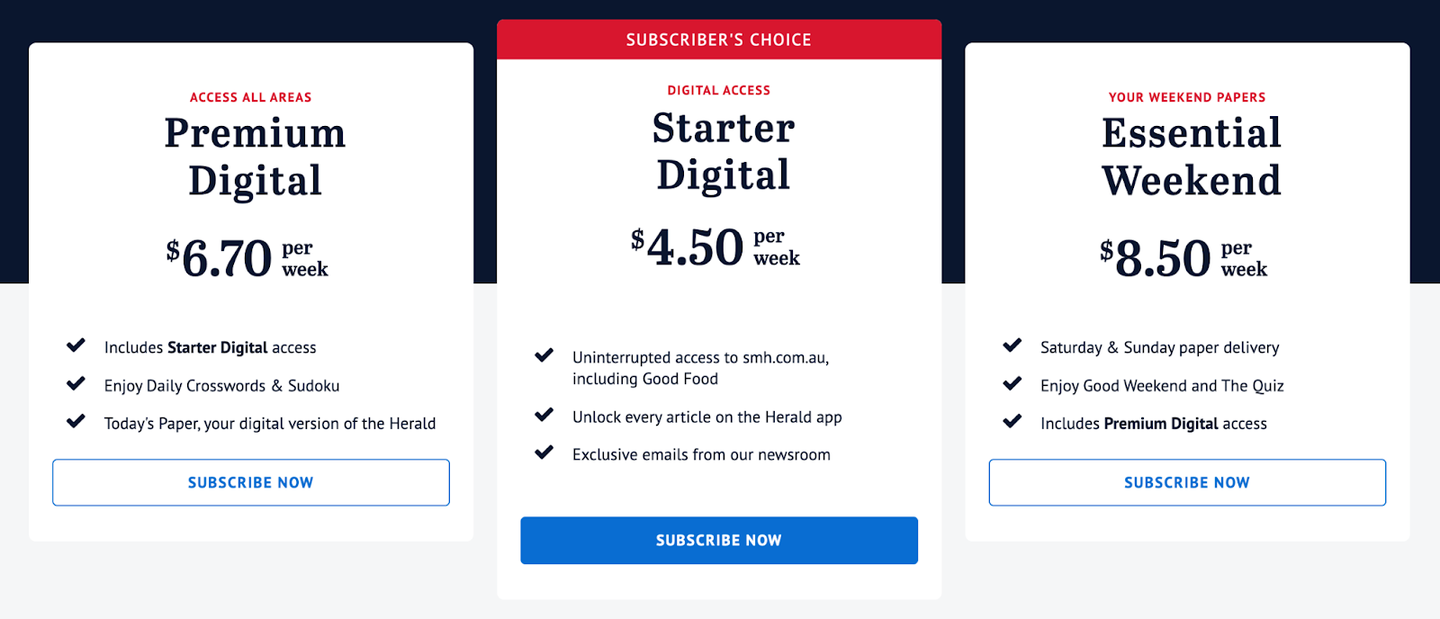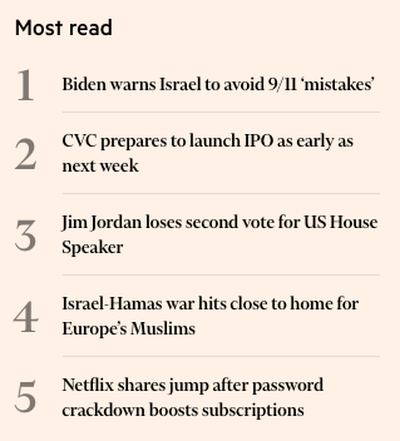-
Adriana Whiteley
Gone are the days of the ‘homo economicus’ – the always rational, self-interested decision-maker. In the world of digital media, human behaviour is anything but simple. Enter the realm of behavioural economics.
Behavioural economics is a fascinating interdisciplinary field that bridges psychology and traditional economic theory. Its objective is to dissect why people make certain decisions and how they can be influenced by various factors. By delving into the intricacies of human cognition, emotions, and biases, it unveils patterns in decision-making that is invaluable to media organisations.
In this blog post, we will dive into how media organisations can harness behavioural economics to boost engagement and subscriptions. From loss aversion, to the von Restorff effect and social proof principles, we highlight key strategies that can transform the digital media landscape and even touch on how AI can help media companies leverage some of these techniques.
Here is our list of 7 potential behavioural techniques aimed to increase conversion, engagement, and retention.
1. The Decoy Effect
The Economist brought this psychological phenomenon to the forefront of the media industry when they (perhaps unknowingly) introduced the concept of ‘asymmetric dominance’ with their subscription options, as explained by behavioural economist Dan Ariely in his viral TED talk. They offered access to their digital content for $59, a subscription to their print product for $125, and then a bundle including both print and digital for $125 again. At a glance, the print-only option at $125 might seem nonsensical, given that the bundle offers more value for the same price. This is where the decoy effect comes into play. The print-only option serves as a decoy, making the bundle appear to be of significantly greater value in comparison. By adding this inferior (decoy) option, they effectively changed consumers’ perceptions, making many lean towards the bundle as it seemed like an irresistible deal in contrast.
The decoy effect has been a well-studied case study of behavioural economics and its real-world application to the media industry makes it an ideal starting point to delve further into psychological techniques to change reader behaviour.
2. The von Restorff Effect
The von Restorff effect is an intuitive yet successful way to nudge people in your preferred direction. It refers to a form of cognitive bias rooted in the idea that distinctiveness aids memory. In simple terms, if you have a set of options, and one option is distinctively different from the others, people are more likely to recall the unique option compared to the others.
This psychological phenomenon is widely used in the media industry, especially when it comes to subscription offers. Albeit knowingly or unknowingly, media companies leverage the von Restorff effect to make certain subscription offers stand out and appear more attractive to potential subscribers.
Below you find an example of the subscription packages offered by the Sydney Morning Herald making great use of different colours and sizes to make their preferred option stand out. This can be particularly effective when nudging subscribers towards annual offers, which generally have a lifetime value of 5 - 10 times that of a monthly subscriber.


3. Social Proof
In addition to the von Restorff effect, the above example also illustrates a clear case of social proof in the red text box. Media companies can benefit greatly from people’s tendency to conform to the actions of others under the assumption that those actions are reflective of correct behaviour. Social proof, in essence, taps into the heuristics and biases of human decision-making creating a ‘bandwagon effect’ – a cognitive bias highlighting that people often do things simply because others are doing them.
A different application of social proof in the publishing industry can be found on the FT’s and many other news websites and aims to boost engagement – adding a ‘most read’ or ‘most popular’ list to your homepage. This feature is a great way to leverage social proof, increase your Click-Through-Rate (CTR) and time spent on site by appealing to readers’ cognitive bias. Beyond just listing articles, publishers can also show the number of comments and shares to further emphasise the popularity of each article, as shown in the example of the Daily Mail, further leveraging the social proof effect.




4. Loss Aversion
Loss aversion, a principle from behavioural economics, refers to the pain of losing something being psychologically about twice as powerful as the pleasure of gaining something of equal value. Media companies can harness this principle in designing their subscription strategy. By offering limited-time free content or discounted subscriptions, readers, once the trial ends, might feel the significant loss of access, driving them to continue at the standard rate. Similarly, special short-term rates can create urgency, making potential subscribers act promptly to avoid missing out. Leveraging loss aversion in these ways can significantly enhance a company’s conversion and retention.


5. Anchoring
A common cognitive bias in customer behaviour is the human tendency to rely heavily on the first piece of information (the “anchor”) encountered when making decisions. This anchoring effect originates from our brain’s inclination to reduce the complexity of decision-making, using the initial information as a reference point. Subsequent judgments are often made by adjusting away from this anchor, but typically not far enough. Hence, the first piece of information influences the final decision.
This phenomenon is particularly evident in the realm of pricing and discounts. A typical application of anchoring is when the original price is shown, often faded or crossed-out, alongside the discounted price. By setting this original price as the anchor, readers are led to perceive the discounted price as particularly valuable, feeling that they are getting a bargain in comparison to the anchored original price.


6. Endowment Effect and Sunk Cost Fallacy
A particularly compelling principle from behavioural economics is the endowment effect, where individuals often ascribe more value to things simply because they own them. This cognitive bias can lead users to value their personalised experiences on a platform, making it a powerful tool for publishers and media platforms.
Moreover, the sunk cost fallacy plays into this scenario. As users invest time and curate their experience (e.g. saving articles or signing up to newsletters), they become more reluctant to leave the platform, even if it may be in their best interest to do so. This aversion to loss, rooted in an investment of time, can lead to increased loyalty.
AI’s role in accentuating this effect cannot be overstated. Consider YouTube’s tailored recommendations, powered by AI. As users engage with videos, the AI finetunes its suggestions based on preferences. Anyone who’s accessed YouTube on an unfamiliar device will notice a vastly generic feed, contrasting their customised experience on a personal device. This differentiation emphasises the depth of personalisations offered. This customised space, facilitated by AI’s learning algorithms, creates a bond with the platform, making users less inclined to leave or switch to a competitor.
7. Choice Paralysis
Another behavioural concept that AI is poised to transform is choice paralysis. A concept grounded in the cognitive bias known as the ‘paradox of choice’, suggests that when confronted with too many choices, individuals struggle to compare options effectively and make choices. In our digital age, with an abundance of options available, readers can often feel overwhelmed, leading to decision fatigue or even inaction.
But here’s where AI comes to the rescue. Through smart curation and personalisation algorithms, platforms can tailor content to individual users, reducing the plethora of choices into a more digestible format and also select the “best offer” at an individual level on the paywall. Take, for example, Spotify. Among millions of songs, the choice of what to listen to next can be daunting. However, Spotify’s AI-driven algorithms analyse user preferences, behaviours and listening habits guiding users’ choices and with a feature such as Spotify Radio’s autoplay, it allows people to consume infinitely more without making any decisions.
The rise of AI isn’t just about automating processes or enhancing user experience on a superficial level. It’s about delving deep into the psychological facets of consumer behaviour and devising strategies that resonate with them on a cognitive level.
Conclusion
Behavioural economics offers valuable insights for enhancing the commercial performance of digital media. Media companies can harness these tools to better align with consumer behaviour, boosting engagement and subscriptions.
For more information on how FT Strategies can help you in applying behavioural techniques to your products, please reach out to us here.




